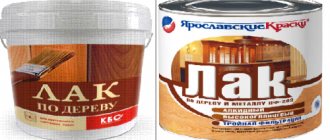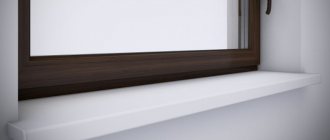Types of floors in the bathhouse
For baths characterized by high humidity and sudden temperature changes, as a rule, two types of floors are used:
- Wooden flooring.
- Concrete screed.
Concrete screed is often installed in steam rooms and washrooms. Ceramic tiles are usually laid on top of such a floor, choosing non-slip, durable and intended for rooms with high humidity levels.
Alternatively, when deciding how to cover the floor in a steam room, you can choose wooden lattice panels for laying on concrete, which will protect your feet from direct contact with the cold floor (pro
How to treat the interior of the lining: distinctive features of water-soluble and oil-soluble solutions
Water-soluble and oil-based bath impregnations differ both in composition and properties. Let's take a closer look.
How can you cover the lining in a bathhouse: water-soluble products
Acrylate is used as a basis for the manufacture of water-soluble products.
The finished product protects the structure from all fronts: from moisture, from microorganisms and parasites, from dirt and damage.
The solution can be either colorless or colored. In order for it to turn into the desired color, you need to add a drop of dye to the product.
This solution also has advantages. These include the complete absence of odor, as well as the preservation of the appearance and texture of the wood.
Attention! The disadvantage of this product is its gradual leaching from the surface of the wood. Because of this, processing has to be repeated somewhat more often.
How to treat lining in a steam room: oil products
The advantage of oil products is that they are deeply absorbed into the wood and retain their properties for quite a long time, despite frequent moisturizing.
However, this solution has a strong unpleasant odor, which is explained by the solvent in the composition.
Information. Due to the increased toxicity of the drug, it is not recommended to use it in closed and poorly ventilated areas.
Impregnations containing oils and wax seal wooden elements and provide them with long-term protection.
Proper work with coating
When processing wooden floors, it is very important to correctly set priorities and strictly adhere to the sequence of technological processes, otherwise the floor will not only turn out to be imperfect, but will also very quickly become unusable.
In addition, when choosing what to cover wooden floors in a bathhouse with, you should not purchase materials from unverified manufacturers with questionable quality, otherwise you risk completely replacing all wooden elements.
Processing and finishing of the boardwalk in the dressing room and other rooms of the bath includes the following steps:
- Applying an antiseptic to protect against mold.
- Finishing with paints and varnishes.
The importance of processing the structural elements of the bathhouse
By its natural origin, wood is an excellent natural material, which is distinguished not only by its environmental friendliness and aesthetic properties, but also by its good hygroscopicity. The tree absorbs moisture quite thoroughly and quickly, creating a very favorable habitat for fungi, microorganisms and insects.
Important! Insects that can settle in your bathhouse can quickly destroy the structure of the wood.
It is worth noting that excessively high air humidity in a bath room contributes to rotting and damage to wooden elements by mold, parasites, and so on.
Every person starting the construction of a bathhouse is well aware of the need to install high-quality heat, hydro and vapor barriers, since without these layers the building structure will be completely vulnerable, and the desired effect should not be expected from the steam room.
Impregnation for a bath plays the same important role as an insulating cake, despite the fact that many are still arguing about whether it is necessary to treat the lining in a steam room. Protection in the bathhouse should be provided to tables, shelves, benches and other interior elements. The steam room especially needs protection, since it is in this room that the temperature varies to critical levels.
If the wood in the steam room is not treated, then under the influence of steam and moisture it will quickly deteriorate, as a result of which it will have to be replaced or repaired.
Attention! The choice of impregnation composition for the inside of the bath should be approached as responsibly as possible in order to avoid further problems.
It is worth noting that doubts about whether it is necessary to process the lining in a steam room are quite justified. This can be explained by the fact that an incorrectly selected composition that will be used to treat the steam room, when heated, can emit vapors harmful to the human body, or leave a burn upon contact with the skin.
Advice for those who are not sure whether it is necessary to process the lining in a bathhouse: you can simply carefully sand the walls and furniture, but in this case it is necessary to ensure the highest quality ventilation so that high humidity does not cause the appearance of mold and fungi.
Antiseptics
The main purpose of any antiseptic composition is to protect wood from rotting, mold, fiber destruction, and pest proliferation.
The operating conditions of any bath require constantly high humidity and high temperatures. All this has a detrimental effect on wood, so it is impossible to do without antiseptic treatment.
When choosing a suitable antiseptic, you should take into account that it must be intended specifically for use in baths, and also that it be produced by well-known companies on the market.
Impregnations are:
- Water soluble . This composition is optimal for treating walls in rest rooms and dressing rooms.
- With organic solvents . Surfaces treated with such impregnations acquire moisture resistance and increased strength. This composition is suitable for both interior and exterior decoration. In particular, if you don’t know how to treat the floor in a steam room, then this product is quite suitable for you.
- Oil based . Products from this category can only be used where there is no high humidity and no sudden temperature changes. You must first understand what is the best way to treat the bathhouse floor in your case.
- Combined use . The advantage of these compounds is that they simultaneously provide protection from both rot and fire.
Before treating the floor in the steam room or any other room in the bathhouse, you should thoroughly clean and dry the wood. Next, you should apply impregnation in several layers, paying special attention to the cut areas and joints. If damage by insects is detected, an alcohol-containing composition should be poured into the channels with a syringe, not forgetting the small area around the defective area.
However, it is a mistake to believe that one soak with an antiseptic will be enough. As the bath is used, any product is gradually washed away. Therefore, it is recommended to apply bath floor varnish over the antiseptic, preferably water-based.
Types of surfaces and material
Perhaps you don’t want to read the entire article because you are interested in a specific answer to an equally specific question - which paint composition is applicable to this or that part of the room - the ceiling or floor, or walls.
Ceiling
There are no specialized paints just for the ceiling. Usually ceilings are painted with the same paint that is suitable for walls.
If you have wooden ceilings, you may decide to coat them with varnish or acrylate, like Tikkurilov's Supi Saunasuoya.
ATTENTION! Ceiling varnish is suitable without additives that increase its wear resistance, which reduces its price.
If you don’t want to preserve the look and texture of wood, you can use any wall paint. Just remember that in wet rooms you should use paints with special markings. These could be silicone or acrylic paints for bathrooms, for example.
Where it is dry, you can paint the ceiling in a bathhouse with ordinary water-based paint, as for a living room.
There are only flooring options that can be found in a bathhouse - wood or concrete. The latter is found in damp rooms; it is not always covered with tiles, but as an alternative to tiles it is covered with special paints, for example, paint for concrete pools, which guarantees resistance to water and good adhesion (sticking) specifically to this material.
Paint for concrete pools Hydrostone
As for the wooden floor, here you still have the same choice - either use an opaque composition, or a transparent one - that is, paint or varnish. If the bathhouse is used frequently, then it makes sense to look for a coating with special additives that reduce its abrasion (polyurethane, urethane). Otherwise, you can save money on this.
In principle, the floor is the coldest part even in a steam room, so your choice is not limited by anything (except for humidity, which should be taken into account). You can use alkyd varnishes and paints, even oil-based ones if you want. Yacht varnishes are designed for direct action of water.
The floor in the steam room can be covered with Finnish paints - there are impregnations, varnishes, and acrylate protection on sale.
For those who would like to read more detailed material on floor paints and varnishes, read this article.
The material of the walls themselves can be very different: wood, brick, blocks. However, they do not remain unfinished, so you will paint either timber/framework, or lining, or, less likely, plaster. The bathhouse is traditionally decorated with wood, but we will still tell you about all the existing options, in case it comes in handy for someone.
Applying varnish
The final stage of finishing any room is varnishing. However, the materials necessary for treating surfaces in a bathhouse are subject to special, increased requirements (for more details: “Which varnish to choose for baths and saunas - the differences and advantages of different compositions”).
The varnish must provide:
- absence of rotting due to increased effects of antiseptic impregnation;
- protect floors from any damage, including mechanical;
- safety for the health of humans and their pets;
- resistance to high humidity;
- no toxic fumes due to overheating.
Before covering the floor in a steam room with any chosen varnish, you should pre-treat the surface, that is, clean the wood from grease, dirt, dust, and remnants of old paints and varnishes. All cracks and irregularities in the floor must be puttied and then treated with an antiseptic.
After this, you can apply the varnish using a brush or roller - whichever is more convenient for you. The varnish should dry thoroughly, after which another layer can be applied if necessary. Please note that in the steam room you can only use varnishes that do not contain toxic substances released into the air when heated. Another important point is that the varnish must protect the coating from accidental fire as a result of a spark from the oven.
Tips for painting wood floors
The most important step in painting wood bath floors is preparing the surfaces. It is carried out as follows:
- The floor is cleaned of dust, debris and dirt with mild detergents or light abrasives;
- Next, all unevenness, roughness, and problem areas are eliminated;
- If there is an old coating, it is dismantled;
- The wooden surface is primed. After drying, the cracks are putty;
- The surface is puttied in two layers using a wide plastic spatula;
- The completely dried putty layer is carefully sanded with sandpaper;
- At the end, the surface is cleared of debris and additionally primed.
Floor painting
Floors in bathhouses are often not only varnished, but also painted in order to further extend the life of the coating. However, when choosing what to paint the floor in a bathhouse with, you need to take into account that the paint must be safe for health, that is, not release toxins when heated. In addition, in the steam room it is better to do without paint at all.
If you need a product to paint the floor of a bathhouse in a washroom, make sure it meets the following requirements:
- ensured the formation of a thin protective film on the surface after application, preventing the accumulation of moisture, dirt and excessive overheating;
- prevented fungal growth and mechanical wear.
Before painting the floor in the dressing room, you should perform all the same preliminary procedures as when varnishing the surface.











